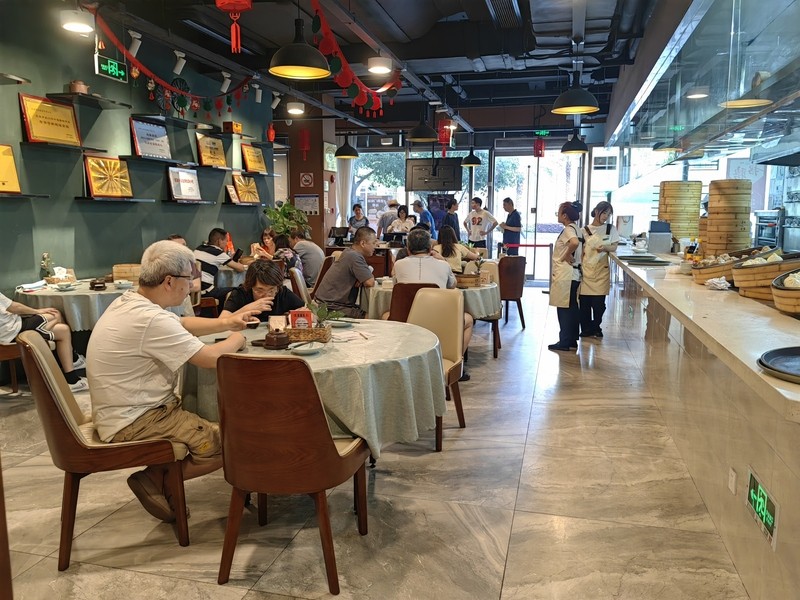How did they do it? Residents come up with their own ideas and contribute, accounting for 90% of the community | projects | residents
For over 5 years, among many interesting community renewal projects in Shanghai, I often come across a name: Big Fish Creation. It was initially initiated by five young people and has been invited by various streets for several years to plan many small and interesting community projects.
The projects all adopt the "community building" model - to create a support platform, which is self planned and self executed by local residents, becoming a true "everyone participation" community activity model case. In the traditional impression, community youth are mostly busy with work or play and rarely participate in community affairs. Wherever Big Fish creates, young people not only actively participate, but are even willing to take the initiative to become the initiators of the action.
What exactly did it do right?
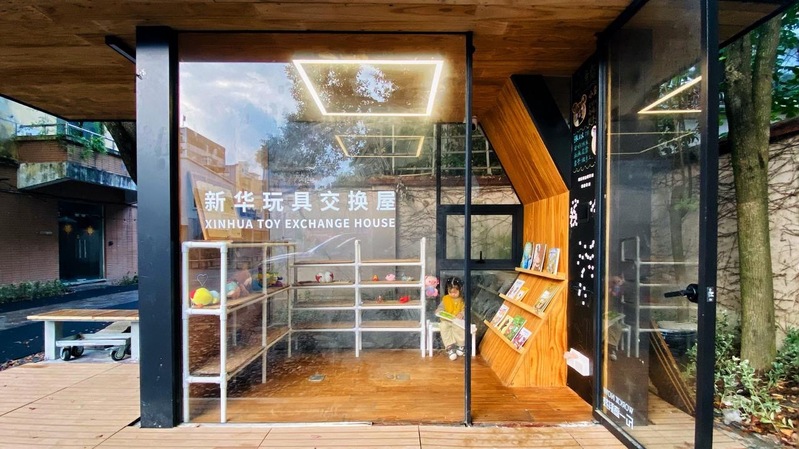
Starting from a fleeting thought, there is a black cabin located near the community construction center on Xinhua Road. Stepping into it, a crisp childlike voice rang from above: "Welcome to the toy exchange room, please organize your toys consciously." The old man stood outside the door waiting, and inside the room, there was a little boy holding a bag of toys, tiptoeing around the shelf to search. In no time, the little boy selected a small car toy and took out a fire truck model from his bag and placed it on the shelf. A toy exchange was completed, and the old man left happily holding the child's hand.
This small toy exchange house is one of the "One Square meter Action" projects initiated, renovated, and operated by residents of Xinhua Road Street. From the ramps and stairs outside the house to the toy shelves inside, and then to the dazzling picture books and toys on the shelves, all were created by the residents themselves. Rabbit, born in the 1990s, is an architectural designer and one of the initiators of toy exchange houses. In 2022, the rabbit came to the community construction center and worked in a shared office space. On the way to work and commute, walk along the shade of wutong trees, and a small black house stands out. It can accommodate two or three adults standing, and was originally an exhibition hall of the Shanghai Urban Space Art Season, created by a design team using 3D printing technology. After the exhibition, it was sent to the alley and temporarily idle. "At first, I didn't want to participate in community governance," said the rabbit candidly. As an architectural designer, she just walked by and saw a space issue, and a flash of inspiration flashed in her mind: how fun it is to make a toy exchange house! In daily community life, every resident who passes by may have a fleeting thought about a nearby point, but they are just thoughts and may not necessarily come true. The shrubs here are too messy and can be planted with more beautiful varieties. The brand is too unsightly and can actually be done this way... The thoughts in the minds of community residents are often just embryonic, and even subconsciously think that these community affairs should be handled by relevant institutions, functional departments, and community cadres. They rarely realize that as a member and owner of the community, they can also participate, and even become project initiators. We just need to provide suggestions, but we still need street officials to handle them. This habitual thinking not only needs to be broken, but also requires residents to take action and make projects. Everyone participates, not just through verbal suggestions from residents. What needs to be done between participation and action?
From one square meter to the entire block in 2018, architect He Jia and four other partners jointly established "Big Fish Construction". All 5 people have a background in design. Da Yu Construction rented a small courtyard in the old alley of Xinhua Road as an office, and He Jia experienced more interesting places in the community.

For example, in the gatehouse at the entrance of the alley, the sun is shining brightly, and aunts and mothers like to sit there chatting. There is a small black room next to it, with some broken chairs piled up, which has become a place to store express delivery items. However, due to the clutter, packages are lost during delivery, and some residents will stick a piece of paper to curse. There are complex relationships between tenants, old residents and new members, residents and shop owners, and different groups that have both stickiness and barriers. When the relevant departments invited He Jia's team to update several micro spaces in the Xinhua community, he had more experience and consideration, and his way of listening to opinions went further than traditional methods. On the one hand, it is a conventional research model, which involves door-to-door "sweeping the buildings" and "sweeping the streets" to collect suggestions from surrounding residents and shops; On the other hand, planning open day activities. In 2018, Dayu Construction held open day activities at the entrance of three renovation points on Anshun Road Greenland, Panyu Road Lane 222, and Xinfeng Village Community.
On the exhibition board of the open space, a satisfaction map and vision board of the venue were prominently posted. When residents pass by and see colorful display boards, they unconsciously stop and discover that the content is related to their community. They carefully read and vote on their favorite design proposals, draw circles, or write a few suggestions with a pen. The open day attracted much more attention from residents than expected. According to statistics, the open day at the entrance of Xinfeng Village has attracted nearly one-third of community households. On the opening day of Lane 222 on Panyu Road, a game of multiple entities in the street space was presented. Outdoor tables and chairs blocking the way for restaurants, waste stations, car repair stalls, and water stations occupying pedestrian space were all reflected on display boards by residents. At the same time, merchants, community officials, and passersby left their own ideas.
Later generations eagerly watched the former's comments and suggestions, as if they saw the street stories connected by various stakeholders. On Anshun Road Green Space Open Day, two children complained that the basketball court in the park was rented by adults and they were kicked out. The two mothers advised the children for a long time, but their little mouths still pouted high. As a result, the mothers of the children rented a green field for an hour on the second weekend of giving advice and invited nearby children to spend some exercise time together. The collection of suggestions on open days was not only used as research results for the renovation and renovation at that time, but its greater significance was to shape a community where all residents could participate, leaving a seed in everyone's heart. Residents have begun to actively pay attention to the communities around them and provide suggestions for project follow-up. The update project can be completed quickly, and the community building around interpersonal relationships is just beginning. Dayu Construction often holds community themed salons, workshops, and community activities in its office space on Xinhua Road.
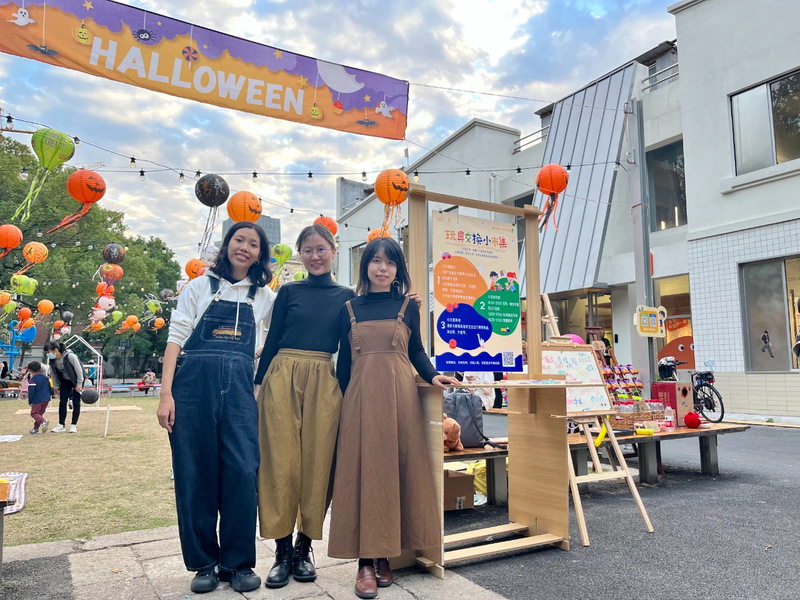
As more and more residents participate and the atmosphere improves, both Xinhua Road Street and Dayu Construction feel that community governance can go further, reaching the stage of how to support residents in implementing good ideas. In 2021, with the support of the street, without setting any agenda or participants, community residents were encouraged to start from their observations and take the initiative to create. Dayu Creation launched the "One Square meter Action". How can an open-ended topic attract the attention of residents and evoke imagination?
Dayu Creation has used many innovative forms of interaction, such as using fluorescent tape to stick a 1 square meter square on the ground in bustling road sections, writing "This is 1 square meter, it belongs to you at this moment", observing the reactions of passersby and exchanging ideas with them.
For example, modifying a bicycle and placing promotional materials for the "One Square Meter Action" on it, while moving and collecting creative ideas from community residents.

At the same time, Dayu Construction recruited community proposals for nearly 70000 residents of the block through official account, Xinhua community WeChat group, offline mobile recruitment and other ways, and invited them to discuss the feasibility and sustainability of the proposal with community designers and external experts. On September 3, 2022, Xinhua Road Street held an offline launch meeting for the "One Square Meter Action". The rabbit met over thirty groups of community residents who were equally inspired and had ideas. This surprised the rabbit who had no intention of participating in community affairs before. Unconsciously, I have come to this step.
Three initiators of the toy exchange house
The rabbit's toy exchange house stood out in the "One Square Meter Action". In addition to the rabbit, there are also two female initiators. The three of them met in a shared office space and hit it off with each other. Yuan Yuan is a precious mother in the Xinhua parent-child group. In the first "One Square meter Action" in 2021, she proposed that many children enjoy playing with sand and hoped to build a sand pit in the community. Many residents responded positively, but at the same time expressed concerns.

For example, on rainy days, sand pits are prone to growing grass, and cats and dogs may defecate inside. Therefore, in the discussions among the residents, a top cover was added to the sand pit, and pulleys were installed to become a mobile sand digging cart. In 2022, she continued to represent a group of community parents in signing up for the "One Square Meter Action", proposing to use the idle space in Lane 345 to mobilize community children to build a free playground by recycling waste materials such as tires and wooden stakes. This project was later eagerly reported by the media.
He Jia said that in the rich activities organized by the community construction center, residents contribute more than 90% of their ideas and efforts, and the street commission for Dayu Construction does not have much to do. But they provided the most crucial support behind the scenes for the Dayu Construction Project - funding, venue, and professional empowerment. For example, in addition to experience sharing, proposal workshops, action teams, and expert guidance, each selected resident proposal can receive about 5000 yuan in landing funds, as well as support for the continuous operation phase after landing. Currently, about 10 projects can be implemented annually.
In 2023, the "Renren Creator" project, which combines community active actors with neighborhood committee governance issues, received funding of tens of thousands of yuan. On weekends, the square in the alley where the construction center is located is filled with various activities, as if it were a weekend gathering for young people.
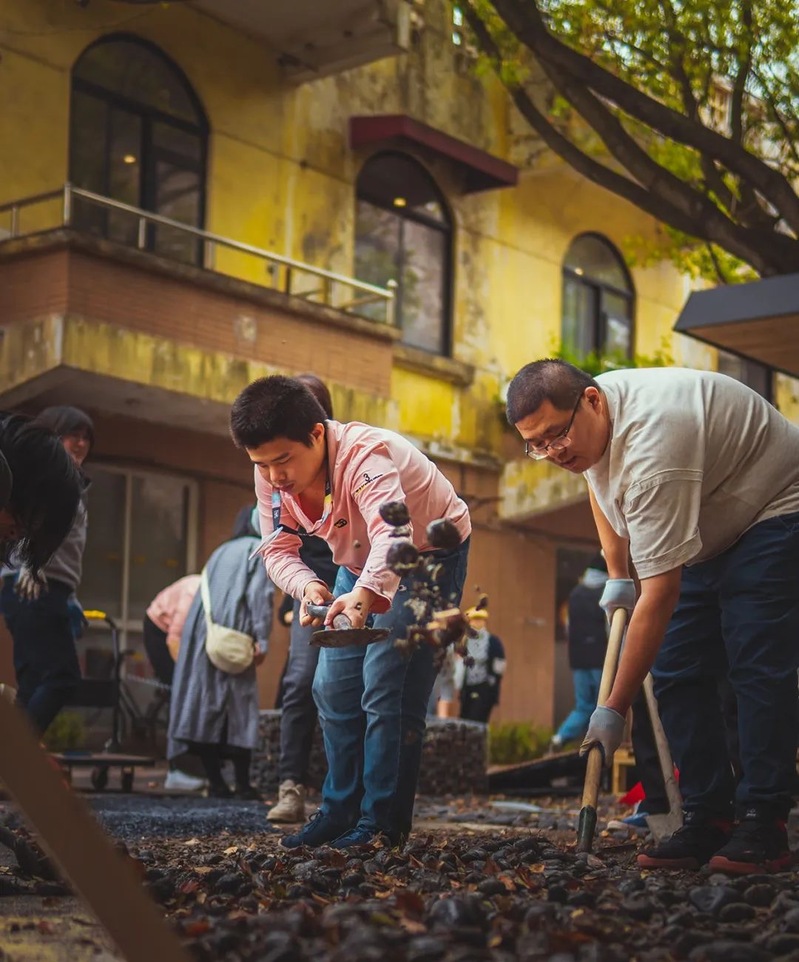
They are all spontaneous activities organized by community residents after registering with the construction center, and the weekend sessions are fully booked, with no less than a hundred organized so far. This is no longer the traditional model of community governance where there are "proposition projects" before residents participate. Based on the platform of the street and the construction team, community residents rely on the support path of the platform to independently propose and execute from the moment problems are discovered.
"From indifference to active responsibility, the key is to use interesting ways to make residents feel that the community is related to me," said He Jia. Community residents often feel that community public affairs have nothing to do with themselves, as if they are the owners and naturally should be served.
But through a series of activities, when a person rediscovers their neighbors and realizes that they have such good ideas about community affairs, and that so many people and I share the same ideas, the driving force to do something for the community gradually forms. But at this point, there will be a checkpoint: who will help residents complete these good ideas? Can we find professionals to execute together?
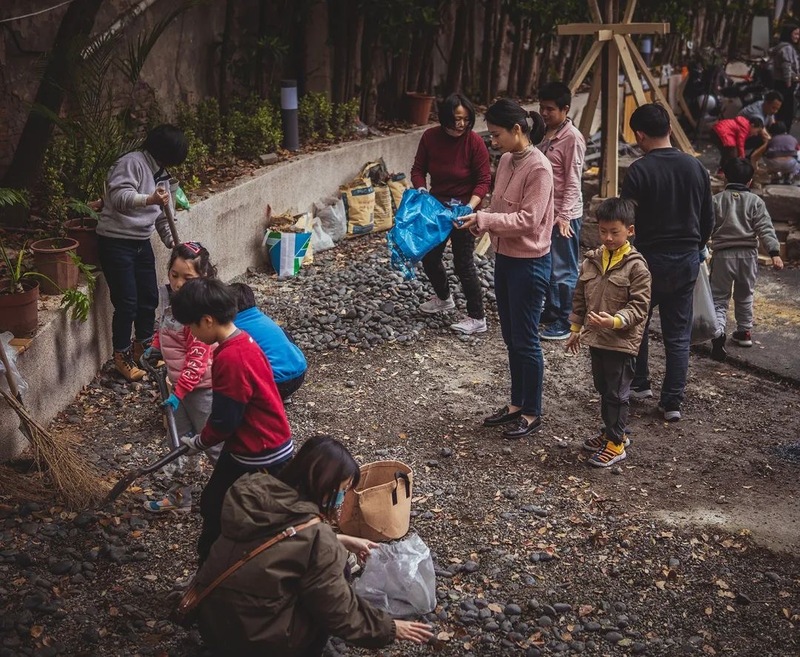
When a group of people really pass the plan review and obtain relevant funds, who can support them in terms of policies, materials, and emotions when they actually operate? Solving these problems and providing support is the only way to have the possibility of follow-up. This is also the mission and difficulty of community building. The operation of toy exchange houses has not been smooth sailing. Not long after the cottage was built, the ramp was accidentally damaged by a bus. The budget funds have been exhausted, and Da Yu Construction has voluntarily invested to bear the maintenance and reconstruction of the ramp. The security guard helped to move some stones and stacked them next to the cabin to avoid being damaged again by passing vehicles. The toy exchange house has officially been put into use. There are three children's store managers every month responsible for cleaning and maintaining the toy house. As a reward, the small store manager can freely control the usage of the toy house: sometimes the toy exchange house will become a one-day children's bookstore, and it will also appear as a special guest at the Xinhua Market.
The success of the project showed the rabbit the joy of community building, and she turned her gaze to the empty space in front of the cabin. Transforming a stone field into a community vegetable garden, "Little Vegetable Garden" starts with a participatory workshop. The rabbit invited a teacher from a nature education institution to initially create a paid course and launched a plan to create a small vegetable garden.
The first session of the workshop was filled with applicants, which was unexpected for rabbits. A team of three quickly expanded to a size of three to four dozen people, each person's expertise or interest in different fields, making early coordination and communication particularly laborious. Big Fish has put forward operational suggestions for moderate construction. As an interest group, it was ultimately agreed that the principle of "whoever advocates, who is responsible" should be followed. Faced with differences of opinion, the proposer cannot just use their lips, they must have the ability to execute the activity. As Xiaocai Garden's proposal begins, "One person can do it quickly, but a group of people can go further." Xiaomi, a boy in a wheelchair, had previously taken the initiative to test the ramp for the toy exchange house, and this time he also joined Xiaocai Garden. The action team proposed the concept of "mobile vegetable garden".

Xiaomi pulled a row of small cars behind his wheelchair, filled with fruits and vegetables harvested from the small vegetable garden, and led a parade of the garden. On that day, the parade team from Xiaocaiyuan also spontaneously cleaned the streets along the way and distributed seeds to nearby businesses. These are the products of everyone's brainstorming at the Little Vegetable Garden project meeting. He Jia said, "Residents can see problems that the government or designers cannot see. In the community, what we need to do is help residents find their dominant position in the community." Resident Oman noticed that the proportion of pet owners in Xinhua Community is high, but most coffee shops restrict pets from entering. If dogs are not properly tied, it can easily cause conflicts. She collaborated with designer Chen Hao to complete a "sparkling dog tie pole" and placed it in front of the pet welcoming storefront. People can enjoy coffee, pets are also properly tied up, and the text on the pillar conveys friendly dialogue. The small shop manager of the toy exchange room left a notebook of opinions.
The immature handwriting on the notebook reads one stroke at a time: "I think some children exchange broken toys, and someone should stop the loss immediately." There is an adult handwriting annotation below: "The suggestion is very good! Invite you to become the administrator together!"
The notice board next to the small vegetable garden collects suggestions for the next development direction in the form of "dot by dot stickers". There are many different colored "dots" pasted under activities such as "Vegetable Specimen Making Activity" and "Training Course on Planting". The red dots represent "I want to hold", while the green and blue dots represent "I want to participate" and "I want to support", respectively. Among them, red dots are not uncommon. From the sprouting of an inspiration to the implementation of an idea, and then to the operation of a project, unconsciously, the sense of ownership gradually upgrades.

Space renewal is essentially human creation. At 10 o'clock in the morning, deep on the first floor of the community construction center, pots and pans are busy, and the sound of stir frying is heard. The host is elegantly preparing meals with Aunt Fang. There is an impromptu kitchen hidden here, where community neighbors and surrounding white-collar merchants can enjoy lunch with a combination of meat and vegetables and less oil and salt on weekdays. Here, there are also stoves and ingredients available, allowing everyone to showcase their culinary skills in an impromptu kitchen. At 11 noon, an aunt came to the impromptu kitchen with a bottle of thin salt oyster sauce. Auntie is a nearby resident, and this is her second time cooking in an impromptu kitchen. During the cooking period, the three of them would occasionally chat about their daily routine and discuss the methods of making food. In no time, a steaming tomato dragon fish dish came out of the pot. At noon, everyone sat around the long table, and the air was filled with the laughter and joy of the diners. "It seems like I've been busy all morning, having lunch with my family," the host explained elegantly. Elegant, born in the 1980s, she has been working in the clothing industry for many years, but she always feels that this is not what she truly wants to do.
Five years ago, Gao Ya moved to Xinhua Road Street due to her child's education, and saw that the community was very popular in holding various workshops. Gao Ya also followed suit and tried to integrate into this unfamiliar neighborhood.
Starting from my spacious living room, I elegantly held yoga workshops and book clubs. In my spare time, Gao Ya likes to cook some delicious food. In summer, when the family couldn't finish cooking the sour plum soup, Gao Ya shared it with the community neighbors and friends from the workshop. Everyone speaks highly of elegant craftsmanship.

At the beginning of 2020, Dayu Construction began to invite Elegant to make tea break Dim sum for various conference activities. A project flashed through my elegant mind: opening my own impromptu kitchen. Improvisation kitchens differ from traditional restaurants in that they have a clear menu. Elegantly speaking, she saw a purple perilla leaf falling from the door, and the next day, the purple perilla drink would be listed on her menu. Resident Aunt Fang is also a resident of Xinhua Road Street. "Not only can you cook different dishes every day, but you can also meet people with different personalities and hear many interesting stories," said Aunt Fang. Nowadays, in the WeChat group of Xinhua Road neighborhood, thousands of community influencers have been excavated. They communicate on online platforms, form community basketball teams, exchange idle items, and conspire with the community market. In the past 5 years, Dayu Construction has also been invited to create community construction projects for other streets in Shanghai, responding in the same way to innovative governance issues in different communities. The Leisure Cooperative was originally a civil air defense basement downstairs for residents in Hongxian Community.
Dayu Construction has transformed 36 independent rooms in this 1100 square meter idle space into an activity center and community innovation hub at the doorstep. Movies and book clubs, parent-child parenting activities, handmade sweater shops, coffee shops, and more are all places where young people can do whatever they want to do in their free time. Most of the hosts are community residents. The earliest cooperation originated from government investment and has now achieved self-sufficiency in profit and loss. With the support of Hongqiao Street, Gubei Golden City Road fully showcases the entire process of people's democracy. Dayu Construction has designed a container cabin called "Rong Gubei Station".
There are rich activities held at the post station every week. It has become a platform for communication, dialogue, and activities among different communities in this highly internationalized neighborhood. The Tianhong Reception Hall located in Ruihong New City was originally a lackluster activity room, but now through renovation, it has become a stage to inspire the Grand Alliance of the Ring Ruihong District by opening up the space as much as possible and creating an open and inclusive atmosphere. At first, young people were attracted by community building activities, and then "fell into the trap". Unconsciously, the audience became participants, the participants became actors, and with operational support, they became project initiators.
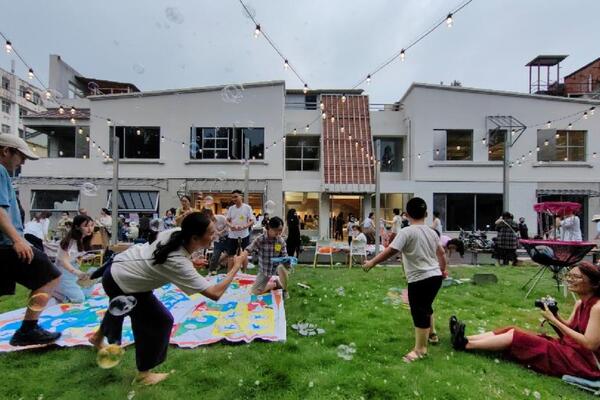
Even more interestingly, over the past five years, there have been numerous papers published in the professional field focusing on the construction of Xinhua Road street communities as a case study. A paper summarizes this model as linking activities and physical space, ideas and resources, diverse entities, achieving diverse and exclusive aggregation, promoting shared and reciprocal social interaction, and increasing community stickiness and warmth. In the context of urban renewal, the process of creating space itself is a powerful carrier, not in terms of project size, funding scale, or number of people. Its core and value are the creation of people in the community.


